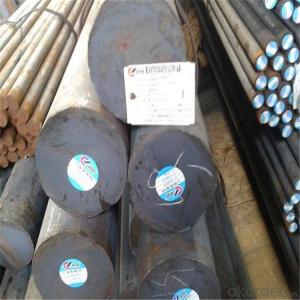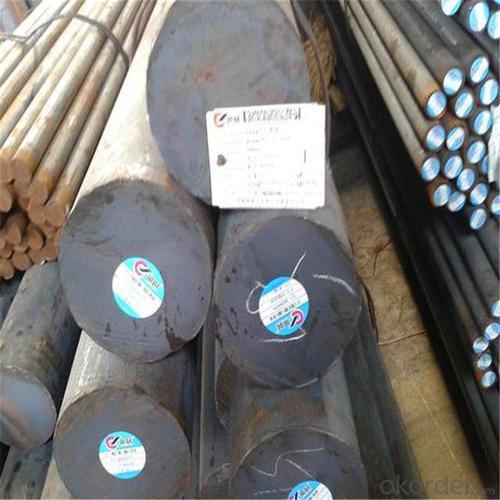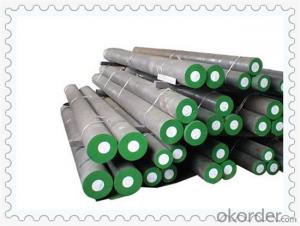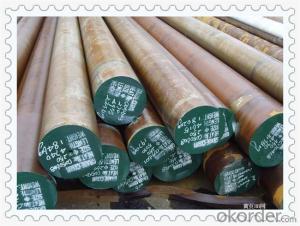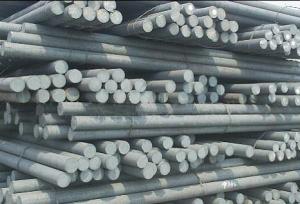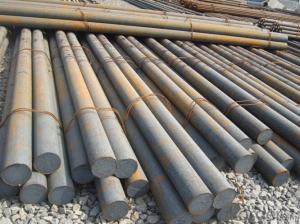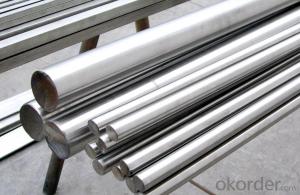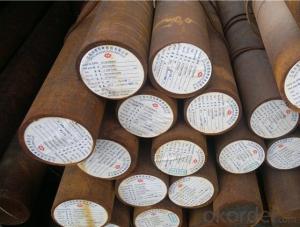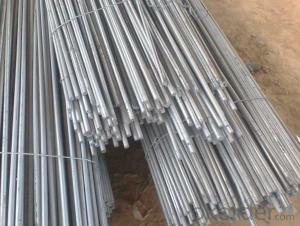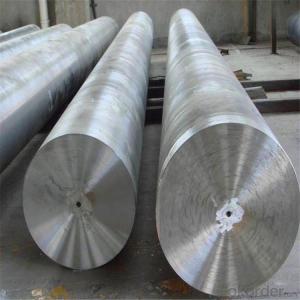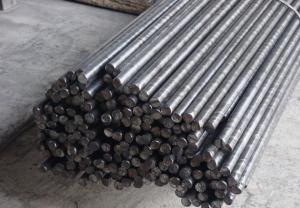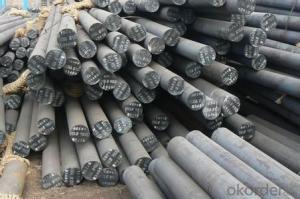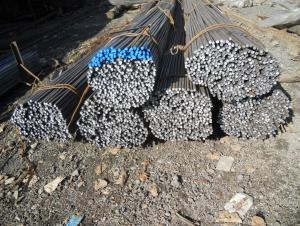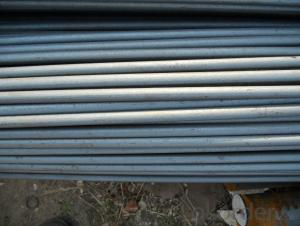Gear Steel 20CrMnTi Forged Round Steel Bar
- Loading Port:
- Tianjin
- Payment Terms:
- TT OR LC
- Min Order Qty:
- 100 m.t.
- Supply Capability:
- 50000 m.t./month
OKorder Service Pledge
OKorder Financial Service
You Might Also Like
Specification
Gear Steel 20CrMnTi Forged Round Steel Bar
Product Description of Gear Steel 20CrMnTi Forged Round Steel Bar
1. Steel grade: 20CrMnTi
2. Length: 6M-12M
3. Diameter: 16mm-300mm
4. Product range: round bar, flat bar, square bar
5. Technique: Hot rolled, forged, cold drawn
Specification of High Quality Carbon Structural Steel Round Bar CK45
Material | 20CrMnTi | Round bar | Dia(mm) | 16-300mm |
Process | EAF + LF + VD + Forged + Heat Treatment (optional) | Length (mm) | Max 12m | |
Heat treatment | Normalized / Annealed / Quenched / tempered | Flat bar | Thickness(mm) | 8-500mm |
Delivery condition | Hot forged +Rough machined (black surface after Q/T)+ Turned (optional) | Width(mm) | 70-200mm | |
Test | Ultrasonic test according to SEP 1921-84 D/d | Length (mm) | Max 12m |
Chemical Composition of Gear Steel 20CrMnTi Forged Round Steel Bar
C | Si | Mn | Cr | Ni | Cu |
0.42~0.47 | 0.17~0.37 | 0.35~0.65 | ≤0.25 | ≤0.30 | ≤0.25 |
Photo Show of Gear Steel 20CrMnTi Forged Round Steel Bar
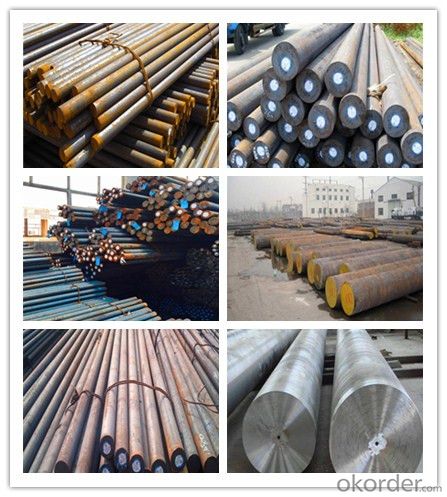
Packing and Delivery:
Packing in bundle package, or as customer's requirements.
Delivery Detail: 45 days after receiving the deposit.
Usage and Applications of Gear Steel 20CrMnTi Forged Round Steel Bar
1. Steel round bar is used in a large number of architectural and engineering structures. Or it can be used in construction of plants for the production of steel house frames, high-voltage transmission towers, bridges, vehicles, boilers, containers, ships, etc.
2. And we can use this kind of product on the performance of the mechanical parts if the demand is not very high.
3. Some special material steel round bar can be used for main shaft of steamer, hummer shank, with big section and supper force.
Company Information
CNBM International Corporation is the most important trading platform of CNBM group.
Whith its advantages, CNBM International are mainly concentrate on Cement, Glass, Iron and Steel, Ceramics industries and devotes herself for supplying high qulity series of refractories as well as technical consultancies and logistics solutions.

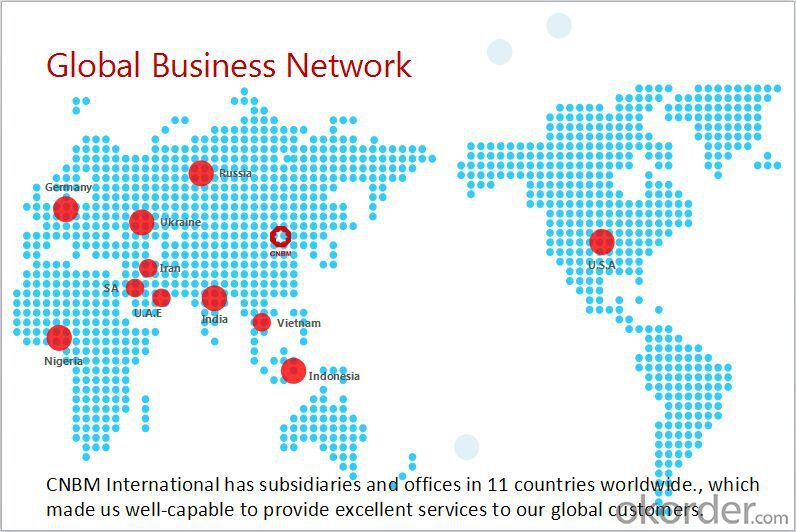
F A Q
1, Your advantages?
professional products inquiry, products knowledge train (for agents), smooth goods delivery, excellent customer solution proposale
2, Test & Certificate?
SGS test is available, customer inspection before shipping is welcome, third party inspection is no problem
3, Factory or Trading Company?
CNBM is a trading company but we have so many protocol factories and CNBM works as a trading department of these factories. Also CNBM is the holding company of many factories.
4, Payment Terms?
30% TT as deposit and 70% before delivery.
Irrevocable L/C at sight.
5, Trading Terms?
EXW, FOB, CIF, FFR, CNF
6, After-sale Service?
CNBM provides the services and support you need for every step of our cooperation. We're the business partner you can trust.
For any problem, please kindly contact us at any your convenient time.
We'll reply you in our first priority within 24 hours.
- Q: Lightning protection earthing zinc plating flat iron and round steel welding method, need to flat iron wrapped in round steel outside welding?
- The flat steel is not required to be wrapped outside the round bar, and the round steel can be directly welded on the flat steel, and the welding joint area can not be smaller than round steel or flat steel, and the section is a cross section
- Q: What are the specifications and standards for steel round bars?
- The specifications and standards for steel round bars vary depending on the intended use and industry requirements. However, there are some general specifications and standards that apply to most steel round bars. Firstly, the dimensions of steel round bars are typically specified in terms of diameter, length, and tolerance levels. The diameter can range from a few millimeters to several inches, and the length can vary as per the customer's needs. The tolerance levels indicate the allowable deviation from the specified dimensions and ensure the bars meet the desired accuracy and consistency. In terms of material composition, steel round bars are predominantly made from carbon steel, alloy steel, or stainless steel. The specific grade and composition of the steel will depend on the application, such as structural, construction, automotive, or aerospace. These grades are established by various organizations, such as the American Society for Testing and Materials (ASTM) or the International Organization for Standardization (ISO), and they define the chemical composition, mechanical properties, and other characteristics of the steel. Regarding mechanical properties, steel round bars must meet certain standards to ensure their strength, ductility, and resilience. These properties include tensile strength, yield strength, elongation, hardness, impact resistance, and more. The standards for these mechanical properties are specified by relevant organizations like ASTM or ISO, and they provide guidelines for manufacturers and users to ensure the bars are suitable for their intended applications. Surface finish is another important aspect of steel round bars. The standard surface finish options include black, peeled, ground, polished, or chrome-plated, among others. These finishes affect the appearance, corrosion resistance, and ability to withstand wear and tear. Furthermore, steel round bars may need to adhere to specific standards for heat treatment, such as annealing, quenching, or tempering, to enhance their mechanical properties or improve their machinability. Overall, the specifications and standards for steel round bars encompass dimensions, material composition, mechanical properties, surface finish, and heat treatment requirements. These standards ensure that steel round bars meet the necessary quality, performance, and safety criteria for their designated applications. It is crucial for manufacturers, suppliers, and end-users to be aware of these specifications and standards to ensure the appropriate selection and use of steel round bars.
- Q: Why can't the grounding device be replaced by steel bar instead of round steel?
- The mechanical strength of the steel thread is destroyed. Because the supporting point is only the ground, it is easy to cut the steel directly if the thread is not vertical. Therefore, we need to use angle iron, steel pipe or smooth steel round bar.
- Q: Can steel round bars be used for making fasteners or bolts?
- Yes, steel round bars can be used for making fasteners or bolts. Steel is a commonly used material for fasteners and bolts due to its high strength, durability, and resistance to corrosion. Round bars made of steel can be easily machined and threaded to create various types of fasteners and bolts, including screws, nuts, and threaded rods. The specific grade of steel used would depend on the application and required strength properties. However, it is important to note that the manufacturing process and quality control are crucial in ensuring the reliability and performance of the final product.
- Q: What are the different methods used for machining steel round bars?
- There are several methods used for machining steel round bars, including turning, milling, drilling, and grinding. Turning involves rotating the bar against a cutting tool to create a desired shape. Milling utilizes rotary cutters to remove material from the bar's surface. Drilling involves creating holes in the bar using a drill bit. Grinding uses an abrasive wheel to smooth or shape the bar's surface. These methods may be used individually or in combination, depending on the desired outcome and the specific requirements of the project.
- Q: Can steel round bars be used for making railway tracks?
- Making railway tracks is possible using steel round bars. They are commonly chosen as the main material for railway tracks due to their strength, durability, and capacity to handle heavy loads. These bars offer a stable and solid base for train travel and can endure the continuous wear and tear caused by train wheels. The circular shape of the bars also aids in reducing friction and enabling smooth train movement. Moreover, steel is resistant to rust, which makes it appropriate for long-lasting outdoor applications like railway tracks. In conclusion, steel round bars are a favored option for creating railway tracks because of their strength, durability, and dependability.
- Q: What are the different surface roughness options for steel round bars?
- Steel round bars offer several surface roughness options, which are determined by the manufacturing process and the intended end-use. 1. Hot Rolled bars have a rough and scaled surface due to the high temperature during formation, causing oxidation and scale formation. The degree of roughness varies based on the manufacturing process. 2. Cold Drawn bars, processed at room temperature, provide a smoother surface finish compared to hot rolled bars. The cold drawing process reduces diameter through a die, resulting in a more consistent roughness. 3. Peeled and Polished bars undergo a secondary process to eliminate scale and surface defects. This involves peeling the outer layer and polishing the surface for a refined finish with minimal imperfections. 4. Ground bars are processed using a grinding machine to achieve precise and smooth surface finish. Irregularities and defects are removed, ensuring a uniform roughness. These bars are ideal for applications requiring dimensional accuracy and a smooth surface. 5. Turned and Polished bars are processed on a lathe machine, removing the outer layer using a cutting tool. This process yields a smooth and polished finish, making them suitable for applications where aesthetics and high-quality surface are crucial. Ultimately, the choice of surface roughness option for steel round bars depends on specific application requirements. Factors like dimensional accuracy, surface finish, and aesthetics influence the most suitable option for a given use case.
- Q: Are steel round bars used in the manufacturing of machinery?
- Yes, steel round bars are commonly used in the manufacturing of machinery. Steel round bars are a versatile and durable material that can be used in various applications, including the construction of machinery components. The round shape allows for easy machining and fabrication, making it suitable for producing shafts, axles, gears, and other critical parts in machinery. The high strength and toughness of steel make it ideal for withstanding heavy loads and impact, ensuring the reliability and longevity of the machinery. Additionally, steel round bars can be customized and tailored to meet specific design requirements, allowing manufacturers to create machinery that is efficient, precise, and capable of delivering optimal performance.
- Q: What is the difference between a ground and a polished steel round bar?
- A ground steel round bar refers to a bar that has undergone a grinding process to achieve a smooth and precise outer surface. On the other hand, a polished steel round bar refers to a bar that has been polished to enhance its appearance, often resulting in a shiny and reflective surface. While both processes improve the surface quality of the bar, grinding focuses on accuracy and removing imperfections, while polishing is primarily done for aesthetic purposes.
- Q: How do you straighten steel round bars?
- To straighten steel round bars, you can use a variety of methods depending on the level of precision required and the size of the bars. Here are a few common techniques: 1. Manual Straightening: This method is suitable for smaller diameter round bars. Place the bar on a flat surface and apply pressure to the bent section using a hydraulic or manual press. Gradually increase the force until the bar is straightened. This technique is relatively simple but may not yield perfect results. 2. Heat Straightening: Heat straightening is effective for larger diameter round bars or bars with severe bends. Heat the bent section using an oxy-acetylene torch until it becomes red hot. Once heated, apply pressure in the opposite direction of the bend using hydraulic or manual tools. The heat softens the steel, allowing it to be manipulated easier. Be cautious not to overheat the steel, as it may weaken its structural integrity. 3. Roller Straightening: This method is commonly used in industrial settings and is suitable for larger diameter round bars. The bar is passed through a series of rollers that apply pressure to the bent section, gradually straightening it. This technique provides precise and uniform results but requires specialized equipment. 4. Hydraulic Press Straightening: For precision straightening, a hydraulic press can be used. Place the bar between two parallel plates and apply pressure using the hydraulic press. Gradually increase the force until the bar is straightened. This method is suitable for bars with minor bends and allows for precise control over the straightening process. It is essential to note that while these methods can straighten steel round bars, the effectiveness may vary depending on the severity of the bend, the quality of the steel, and the equipment used. It is advisable to consult with a professional or follow industry-specific guidelines to ensure safe and accurate straightening of steel round bars.
Send your message to us
Gear Steel 20CrMnTi Forged Round Steel Bar
- Loading Port:
- Tianjin
- Payment Terms:
- TT OR LC
- Min Order Qty:
- 100 m.t.
- Supply Capability:
- 50000 m.t./month
OKorder Service Pledge
OKorder Financial Service
Similar products
Hot products
Hot Searches
Related keywords
